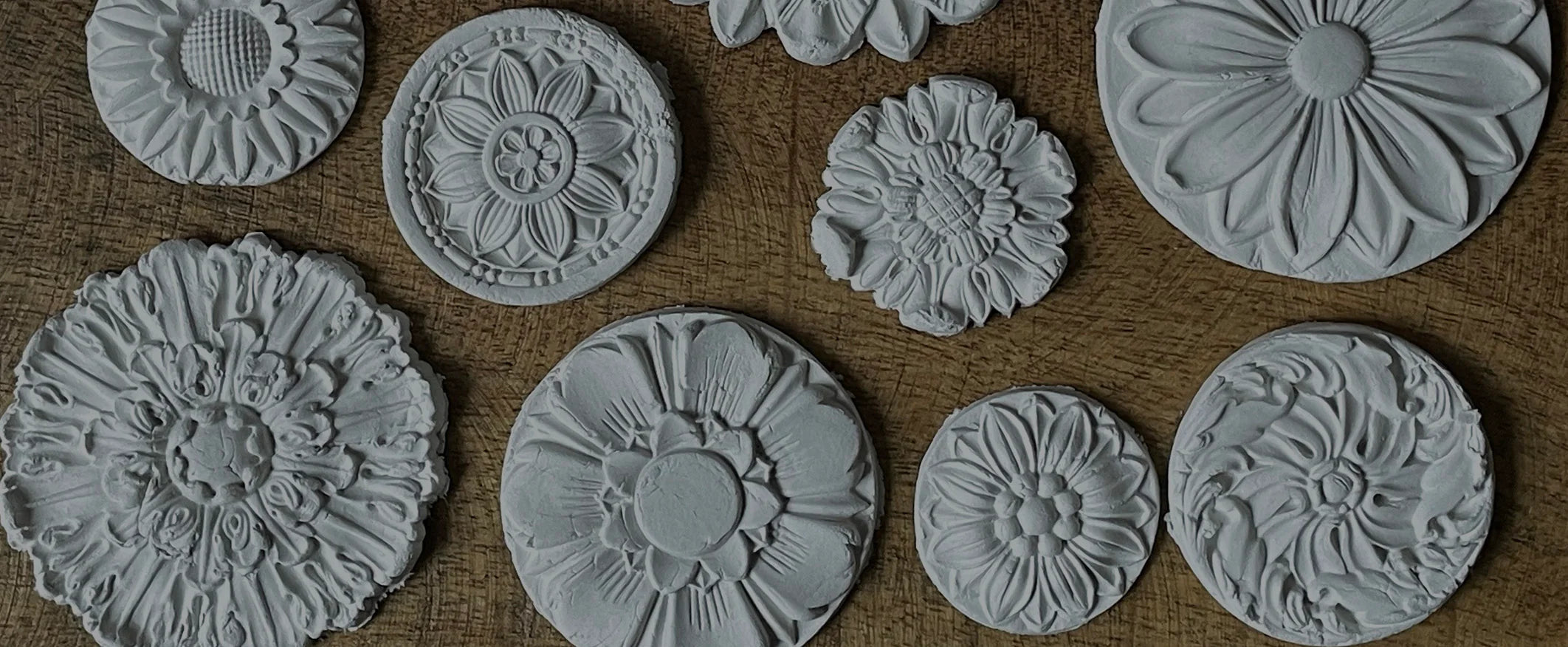IOD Moulds can be used with many different mediums. We
will cover the two most common here. Every medium has its own characteristics,
challenges, and virtues.
Air dry clay, or paper clay: IOD
paper clay is an air dry medium, and one of our favorites. Like most paper pulp
based air dry clays, some shrinking, warping, and cracking is inherent. We like
these qualities for a distressed, authentically vintage look. Our favorite way
to apply moulded pieces is to remove them from the mould while still moist, and
adhere to the surface with the appropriate glue so it conforms well. For
vertical surfaces, use a piece of low tack tape to hold it in place so it
doesn’t slide.
Casting resins:There are some great pourable resins available. These have completely different qualities than the paper clay. There is no shrinking or warping, and the castings are more consistent. Depending on the project, these qualities can be helpful. If you need to conform them to a curved surface, this can be done if removed from the mould before it’s completely hardened. We strongly recommend using a mold release/conditioner with resin for the longest life of your mould. Please also ensure you are mixing your resin exactly as directed on the packaging. Mixing resin incorrectly can damage the mould.
On releases:We find that with most mediums (excluding resin) a release is not necessary and the casting will come out without the use of a release, however, if you are having trouble with the material sticking (more common with clays than resins), a light dusting of simple cornstarch or arrowroot is a great choice. For resin we do suugest using a mold release/conditioner for the longest life of the mould.
